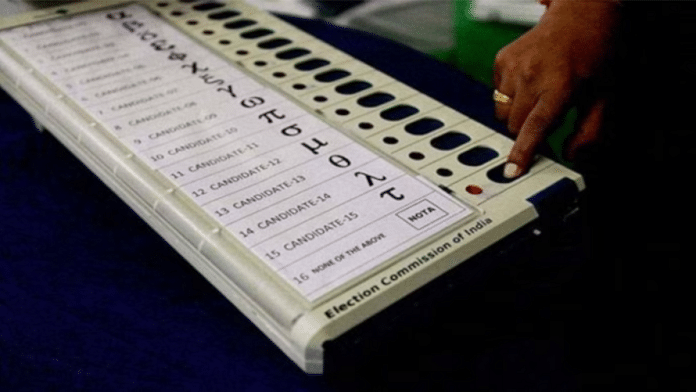Voters are choosing new governments in a record number of elections this year – but how many of them will be voting electronically?
Electronic voting – or e-voting – is being used in a growing number of countries, but voting technology and the debates around it are still developing.
Electronic voting systems include using e-voting machines or kiosks in polling stations.
These register votes immediately and print out receipts, but aren’t connected to the internet, according to Euronews.
Voting online from our homes or other locations – including another country – or voting by email or text message, are also forms of e-voting.
Voting technologies over time have included mechanical lever machines first used in the 1890s, paper ballot scanning first used in the 1960s and electronic vote recording machines first used in the 1970s, according to election data specialist, MIT Election Data + Science Lab.
Electronic voting was being trialled by the 1980s, but it wasn’t until the early 2000s – when the internet was taking off – that countries started using remote online voting on a bigger scale, according to electoral knowledge network ACE.
What are some positives and negatives of e-voting?
Electronic voting helps voters who live in remote areas or abroad, or who can’t get to polling stations because of a health condition and other reasons, the European Commission says.
For governments, the benefits of e-voting include more efficient elections and a faster count.
Drawbacks of e-voting can include risks of cyber-attacks or software errors. Identifying and verifying online votes can also be difficult.
Today, algorithms help to encrypt and authenticate votes, Euronews says.
Researchers at the Universities of Warwick and Newcastle in the United Kingdom say they have developed “ground-breaking” technology that could make e-voting more secure, accessible and trustworthy for future elections.
Which countries are using electronic voting systems?
Estonia was the first country in the world to use online voting in 2005. Last year, the European country held ”the world’s first mostly digital elections”, with more electronic votes (51%) cast than paper votes (49%) for the first time.
In India, almost 1 million people will vote this year using e-voting machines at polling stations, according to Euronews.
Russia and Turkey are among other countries rolling out e-voting systems, while Norway and Mexico are allowing e-voting in this year’s elections for citizens living abroad.
France has an online voting system, but this isn’t used for national or local elections, according to data visualization specialist Statista.
Some areas of Switzerland are offering e-voting, reports news site SWI swissinfi.ch.
Digital access reduces inequalities
Internet access and digital technology are crucial for reducing social and economic inequalities, the World Economic Forum says.
Yet 2.6 billion people in the world are still offline.
This is the core focus of the EDISON Alliance, a Forum initiative to widen access globally to digital technology.
The Alliance aims to improve the lives of 1 billion people by 2025 through affordable and accessible digital services in healthcare, education and finance, such as internet banking, online education and remote healthcare.
So far, it has reached 784 million people in 127 countries through 320 digital initiatives.
“By democratizing access to digital technology, we open doors to better education, economic opportunities, and a more inclusive global economy,” Forum Executive Committee Member Sebastian Buckup says.
This article previously appeared in the World Economic Forum.



